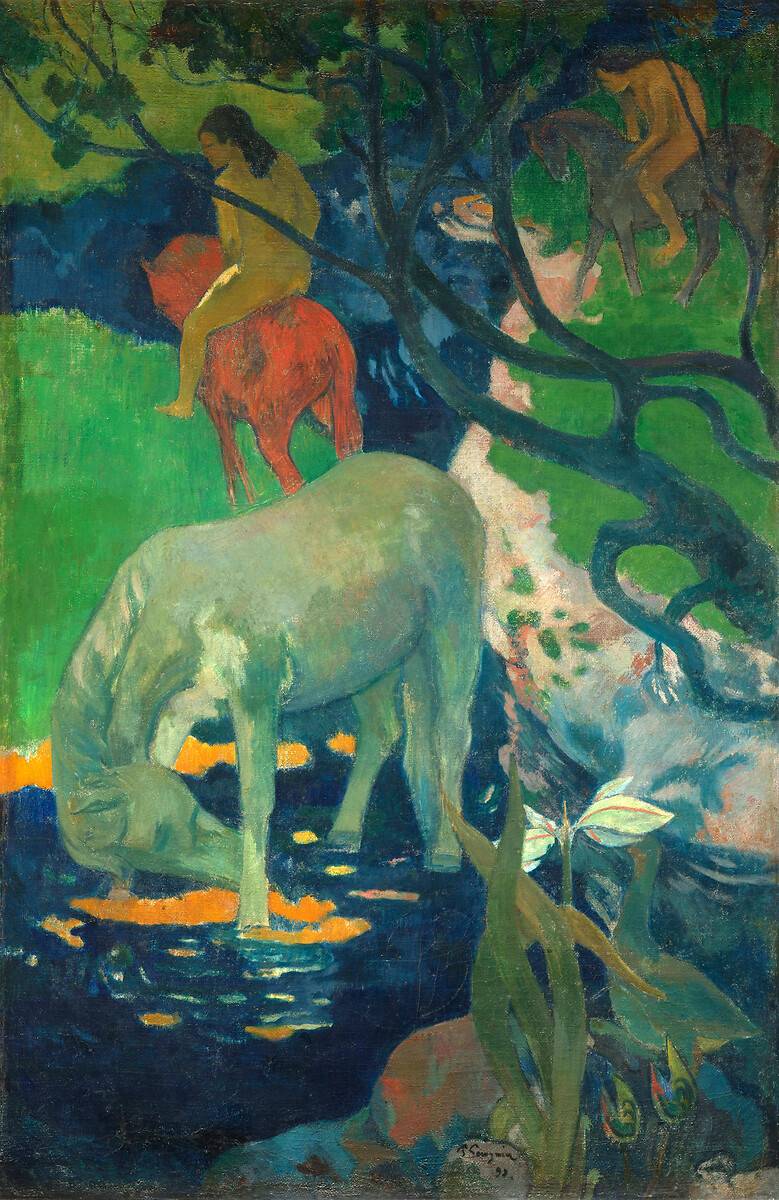Shop art print and framed art Le Cheval blanc by Paul Gauguin
Subjects : Animals, Flowers & Botany
Keywords : 19th century, Neo-Impressionism, aquatic plant, bare, horse, knight, river, tree
(Ref : 47250) © RMN (Musée d'Orsay) /Hervé Lewandowski
Customise
Your art print
Le Cheval blanc OF Paul Gauguin
The artwork
Le Cheval blanc
"Le cheval blanc" (in Dutch: The white horse) is an 1898 painting by the French painter Paul Gauguin, oil on canvas, measuring 140 x 91.5 centimetres. The work has been in the Musée d'Orsay collection in Paris since 1986, on loan from the Louvre.
Gauguin painted The White Horse during his second stay in Tahiti. During this period, his health deteriorated, partly due to the syphilis he had contracted. His financial situation was also worrying, as the money he sent from Europe was late and he spent a lot of money on the island, particularly on wine. However, Gauguin also needed money to buy medicines, which he obtained from a local apothecary in Papeete. He regularly tried to pay off his debts with paintings, so he had also agreed with the apothecary that he would provide him with a painting of a white horse as payment. When the apothecary was offered Gauguin's work, he exclaimed: "But this horse is green! Gauguin then sent the work, along with others of his, to his friend George-Daniel de Monfreid in France, asking him to monetise it. De Monfreid made every effort to sell Gauguin's works, but in the case of the White Horse, he never succeeded. He donated it to the national collection of the Musée du Luxembourg in 1927, long after Gauguin's death.
The basic theme of The White Horse is formed by the Tahitian landscape and its dense forests, through which Gauguin so often wandered during his stay to be alone. The left half of the work is dominated by the white horse from which [...]
This artwork is a painting from the modern period. It belongs to the post-impressionism style.
« Le Cheval blanc » is kept at Musee d'Orsay, Paris, France.
Find the full description of Le Cheval blanc by Paul Gauguin on Wikipedia.



































